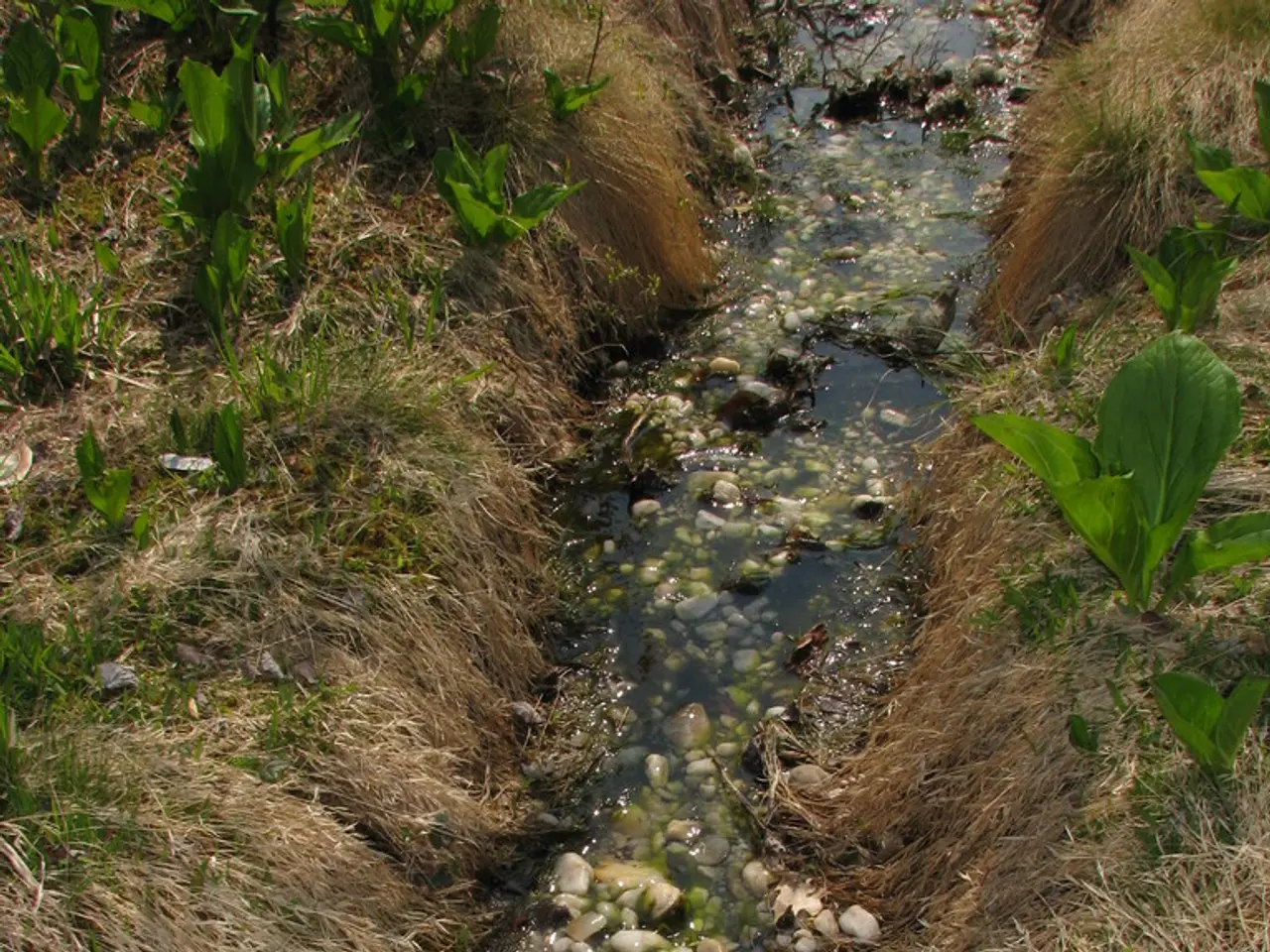Best Practices for Irrigating Plants in Clay Soil: Experts Reveal Optimal Techniques for Thriving Plants Despite Summer Heat
===================================================
Heavy clay soil, common in many UK gardens, can be a challenge when it comes to watering plants. However, with the right approach, you can ensure your plants thrive in these conditions.
Steven Bell, a gardening enthusiast and founder of Paving Shopper, warns that watering clay soil requires careful management to avoid suffocating or withering plants. The key is to water deeply but infrequently, allowing water to penetrate slowly and reach the roots without causing runoff or waterlogging.
One effective method is deep, slow, and infrequent watering. Use a drip irrigation system with emitters spaced widely (18-24 inches apart) to allow water to soak deeply rather than surface-watering quickly. Watering sessions may need to last hours rather than minutes, typically once or twice a week, to fully saturate the root zone without overwatering.
Avoid frequent shallow watering, as clay soil holds moisture longer, and watering too often can keep roots waterlogged and reduce oxygen availability. Deep, less frequent watering encourages roots to grow deeper and stronger.
Improving soil structure with amendments is also crucial. Adding organic matter like compost or soil additives (peat moss, manure) can improve water movement and retention balance by loosening compacted clay and acting like a sponge to hold water while allowing drainage.
Consider the clay pot irrigation (olla method), where porous clay pots filled with water are buried near plants, slowly dispensing water directly to roots, conserving water and preventing surface runoff or evaporation in dense clay soils.
Mulching is also recommended for clay soil. Applying mulch atop clay soil moderates moisture loss through evaporation, reduces surface crusting, and improves overall soil moisture consistency, helping plants thrive. Organic types of mulch, like compost, leaf mould, or well-rotted manure, are perfect for clay soil as they gradually improve its structure.
Monitoring soil moisture is essential because clay soil can remain wet on top but dry deeper down. Testing moisture periodically near roots will guide watering timing and amounts.
By combining these practices—deep, slow, infrequent watering; soil amendments; and moisture conservation techniques—plants can avoid stress from poor drainage or overwatering typical in heavy clay soils and achieve healthy growth.
This approach contrasts with sandy soils, which need more frequent watering due to fast drainage, so adjusting irrigation to soil type is critical for success.
Overwatering clay soil can be harmful to plants, but with careful management and the right techniques, you can create the perfect environment for your plants to flourish in clay-heavy gardens.
Incorporating deep, slow, and infrequent watering methods into your gardening routine can help plants grow successfully in home-and-garden settings with clay soil, as explained by Steven Bell. Additionally, using organic mulch on clay soil aids in the retention of moisture while improving the overall consistency of soil moisture, promoting a desirable lifestyle for your plants.




